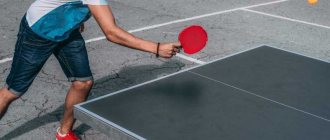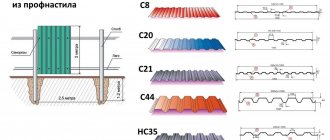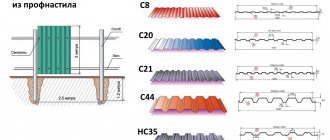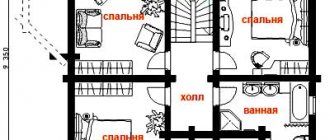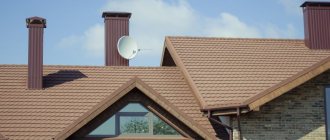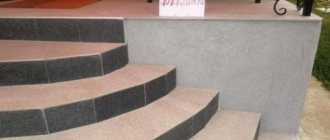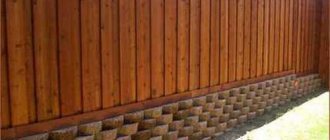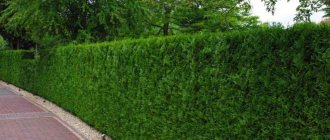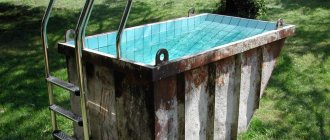Not so long ago, wicker fencing was the main way to separate private property. The emphasized antiquity and natural origin of the raw materials allow the wattle fence to organically fit into the countryside landscape. For this reason, they are in demand in large areas near and between populated areas, as well as in parks and various natural sites. If you need to create a rustic ambiance or the atmosphere of an old courtyard, first of all you should take care of the appearance of the fence. Depending on the direction of the rods, wicker fences are divided into horizontal and vertical. The first option is usually denser and requires a lot more branches. Living fences are also popular. They look fresher, and sometimes are additionally decorated with a hedge of lush plants. The wattle fence is one of the types of structures that can be made without special education.
Peculiarities
An ordinary fence is a light barrier made of shoots and flexible branches. This type of fence features chaotic lines and a makeshift structure. The material is used in its natural form, almost without being processed. Wicker fences are mainly decorative structures, because they are rarely erected to a height of more than 1.5 m. There are also tall modifications, but this option is not always justified, since large dimensions do not solve the problem of the fragility of the material itself, and even in a large fence there will be more cracks and they will, in principle, become larger.
The above nuances imply frequent repairs of the fence, as well as greater openness of the area for viewing by strangers. The main advantages of wicker are the low cost and lightness of the consumables. Wicker fences are still relevant today and can be combined with many styles of site design.
Where to use wattle
This is how small plots of land are fenced. The fences are also used as additional fences inside private property. Low variants are also erected along paths. They are often used to separate gardens, vegetable gardens and flower beds from the rest of the space. The fence perfectly demarcates the territory of two neighboring plots. Low and medium-high fences will not cast much shadow in any direction. The branches are excellent for constructing partitions used for zoning areas. This is how summer and children's playgrounds, gazebos, and terraces are set up. Fences are also used to decorate barbecue areas. Low wicker fences can be seen in themed restaurants. Pletni is an important element for expressing ethno-style. At dachas and other properties, a wicker fence goes well with other wicker items - chairs, rocking chairs and tables.
Decorative elements
It is recommended to add attractive visual details to a wicker fence.
You can plant sunflowers nearby or place their artificial counterparts. Chamomiles, asters or chrysanthemums will fit perfectly into the ethnic style of a wattle fence. Any climbing plants will only emphasize the visual advantages of the structure. This is interesting: a wicker fence made from boards.
A bench made of stumps and boards will perfectly complement the colorful landscape. And shoes, galoshes or clay pots hanging on pegs will definitely lift the spirits of those around you.
When making wattle fence, the main factor for successful completion of the work is patience. The creator of this piece of wooden architecture will definitely be pleased with the end result.
Selection and calculation of material
Such fences are usually woven from willow or hazel. These plants have long, smooth and flexible branches with virtually no transverse processes. This raw material is symmetrical, which is an important plus. Sometimes reed stems are used, as they bend well, but the structure is fragile. Bamboo is especially durable, but you will have to order it. To create wickerwork, vines without bark are used. Calculation of the required amount of material is done “by eye”. One armful is enough for a fence 50 cm high and long. This value is not constant and can deviate towards decreasing or increasing, since the diameter of the rods varies, and the density of the weaving is selected individually. Tyn can be erected from young branches of many bushes and trees, but only at a certain length - from 1 meter. In this case, the work will be more complicated, and the weaving itself will be chaotic.
Other nuances:
- Large, even branches of 4 cm in diameter are used as support. It is appropriate to use metal rods, boards, round beams, if they do not spoil the overall picture and do not stand out too much.
- The step between the crossbars is usually 0.3-0.5 meters.
What will a willow hedge look like in 10 years?
Willow grows very quickly, so it will have to be constantly trimmed. If this is not done, within 10 years the neat fence will turn into dense thickets, and not everyone will like this. But, if you properly care for the plantings, after 10 years the fence will resemble ornamental shrubs from traditional English gardens (Figure 7).
Note: You can trim a hedge with regular garden pruners or scissors, or with a saw or electric shears. The tree tolerates pruning well and recovers quickly.
Figure 7. In just 10 years, the fence will grow greatly and turn into dense thickets.
The fence is pruned the hardest in the spring. Already in the first two years, the tree will throw out a lot of shoots, which will actively grow, so it is in the first years that active pruning should be carried out. Thick shoots are cut with a knife, and young branches with pruning shears. Since pruning does not harm the willow, it can be done up to 4 times per season, gradually giving the fence the desired shape.
You can learn more about creating willow hedges from the video.
Types of weaving fences
Weaving options are distinguished according to several criteria. Depending on the height, it can be high (fence height more than 2 m), medium (1-2 m) and low (below 0.7 m). The first type of weaving involves the creation of permanent structures, for example, an external fence. The second is used to separate zones and separate small summer cottages. The third type is associated with the creation of decorative partitions, fencing flower beds and paths. Depending on the principle of connecting the elements, horizontal, vertical and inclined weaving is distinguished, as well as the less common round and checkerboard. In the first case, we are talking about laying long rods perpendicular to the vertical supports. In the second, horizontal veins act as the basis for the vertical placement of branches. The inclined option implies diagonal placement in increments of up to 0.3 m. According to the installation method, weaving is divided into poles, which is done directly onto the supports, and in sections, when the canvases are woven separately and then placed between the pegs.
Installing a birch pencil on the foundation
A fence foundation is a great way to protect wood from premature deterioration and improve its appearance. Wooden logs can be installed in combination with decorative pillars made of concrete stone or brick. In this case, the birch pencil can be positioned both vertically and horizontally.
- The first step in creating a combined wooden fence will be the construction of the foundation.
An example of installing birch fence pencils on a strip foundationA log structure has considerable weight, so the base must be reliable, especially if you plan to use massive pillars made of stone or brick. The foundation plinth is also made of material corresponding to the pillars. A birch pencil with natural stone looks especially organic.
- The next step is installing cross beams on the fence posts. Two beams made of timber with a small cross-section are installed.
- Logs can be nailed onto the installed frame.
Finally, you can decorate the fence in your own way. Leave it a natural look, treating it only with stain, drying oil or matte varnish. Add color by painting with any paint. Another interesting option is a picket fence in the form of colored pencils - original, fun and pleasing to the eye.
Step-by-step instruction
The wattle fence is constructed in several steps:
- Preparation of materials: branches of various thicknesses separately for the base and for the canvas.
- Preparing tools.
- Calculations on the territory.
- Creating a foundation.
- Installation of rods on the base.
- Eliminate deficiencies immediately after creating the fence.
The first step is to resolve the issue of choosing raw materials. The final decision should primarily be influenced by the planned configuration and purpose of the wicker structure. Materials need to be collected or purchased. The first option is preferable, since collecting stems does not take much time. However, there are two small periods of time in the year for this. The collected branches are sorted depending on their thickness. Large branches for supports must be processed. Then the exact location for installing the base is determined. The pegs are driven into the prepared soil to the required depth. Further actions depend on the chosen weaving option. Two main ways: horizontal and vertical. The first one is used more often. When the wattle fence becomes dense enough, all that remains is to decorate it. There are few traditional decorative options, literally two or three, but there are many more ways to decorate a fence.
Materials and tools for building a fence
The first step is to decide which type of plant will serve as the basis for obtaining the elements of the future design. It is recommended to choose between willow and hazel. Smooth, flexible and long branches are required. The minimum permissible thickness is about 1 cm. The role of support is given to branches with a diameter of at least 4 cm. Instead, it is permissible to use round beams, as well as iron rods, although due to the disruption of the natural appearance, this option is undesirable. The twigs should be collected in early spring or autumn months. They will need to be softened in water and cleared of bark. In addition, you need to collect tools. To create a wicker fence, you need tools such as nails, a screwdriver, construction line or thread, wire, a sledgehammer or large hammer, tape measures, a wooden mallet, hacksaws and pruning shears.
Preparing the base
The base can be made from almost any type of wood. You will need to make sharpened pegs from the material to insert into the soil. Install them at the same distance from each other. The recommended depth for driving supports into the ground starts from 20 cm and increases depending on the height of the planned structure to 50 cm. The ideal structure will withstand strong winds and settlement of the ground. The minimum permissible diameter of support pegs is 4-5 cm. Larch poles are among the most durable. If the pegs are made in the classic version (i.e., made of wood), then they are treated with impregnations, antiseptics and varnishes. These measures are aimed against rotting and fragility. The cuts need to be additionally charred. Under the base it is necessary to make drainage from sand and crushed stone. The height of the fence is determined based on the purpose and individual wishes.
Preparation of rods
The material is harvested in autumn or early spring. The movement of sap at this time is minimal and there are not many leaves on the plant. Priority is given to the straightest and longest stems. If the fence will not be erected soon, the branches are dried. For a standard wattle fence, shoots within a 3-centimeter width are selected. Wider rods strengthen the fence. Shortly before weaving begins, the branches are soaked in water to make them flexible and remove the bark. The duration of this stage of work is approximately a week, but in the case of freshly cut rods it is reduced to several days. A pincher is used to process the branches. You can also use pliers or wire cutters. The end of the branch is placed between the clamps and pulled towards itself. If the shoot is well wet, removing the bark will be easy. It is better to cover perfectly cleaned branches with stain and antiseptic. You can adjust their color. However, if you plan to build a large fence, it will take too much time.
Horizontal wattle fence
The load-bearing elements of the horizontal version are pillars driven into the ground. The base should consist not only of pegs, but also sand and crushed stone drainage. Smooth, thick pillars are inserted into the soil with a gap of 1-1.5 m between adjacent elements. If the branches for forming a section are very thin, then a minimum distance of 1 m is selected. We take the rod by the thick edge and place it behind the second post, with the continuation of the branch we go around the outer stake and move along all the supports in a “figure eight”. It is advisable that one vine is enough to cover at least three pegs. Each subsequent row starts from the opposite edge. It is necessary to maintain uniformity in the placement of thick and thin rods, and so on throughout the entire fence. The thickness of the fence at different points should not differ much. When the structure reaches the desired height, you will need to trim the length of the rods.
To make the rows of rods more dense, they should be hit with a wooden hammer from top to bottom.
Vertical wattle fence
The method of installing the base is initially similar to the horizontal version. The support pillars are driven in the same way. Parallel to the ground, you will need to install at least 3 strips of twigs of approximately the same thickness as the pegs, or less. They are tied or nailed to supports. The total number of slats depends on the height of the fence - they should be placed no further than 25 cm from each other. To ensure that the fence has a neat appearance, a crossbar is placed along the top side, which is removed after completion of the work. Rods are vertically attached to the support strips, matching the height of the fence. With their thick edges, these branches rest against the ground and are then intertwined with horizontal supports. The rods need to be fixed at the top. Wire is designed for this task. Alternatively, you can use thin rope or weave several horizontal rods.
Decoration
Previously, sunflowers and cornflowers were planted near wicker fences. This type of decoration is considered classic. Modern options involve planting fresh flowers, as well as the use of artificial ones. A flower arrangement can be created from nasturtiums, chrysanthemums, asters, and daisies. The fabric of a wicker fence is a suitable place for climbing plants. A bench made of boards, sections and stumps will diversify the monotonous row. It is customary to hang pots on the tops of support posts. In the same way, you can use small stuffed animals, shoes, etc. You can approach decoration more thoroughly. For example, select and place several dozen large decorative stones of different colors near the fence, install 1-2 flowerpots with rich green vegetation and a wheel from an ancient cart on them. The result will be an effective and inexpensive composition. A wicker arch can be erected next to the gate.
Planting a living wattle fence
Such a fence will grow upward and thicker. Branches that become too tall are cut off or sent lower. The living fence practically does not protect the territory, but it can be used as a zone separator within the site. To collect living vertical wattle fence, you will first need to prepare the soil. For this purpose, places for support pillars are selected. We select the distance between the elements within 1-1.5 meters. Then the supports (4-5 centimeters thick) are driven into the ground 40 or 50 cm. To facilitate this process, the lower ends of the supports should first be sharpened. Next, we attach the transverse joists. Using wire, we install thinner rods in several rows (3 are enough at a height of 1.5 meters). Then it's time to plant the branches. Shoots up to 3 cm thick are immersed in the soil by 30 cm. The distance between the stems should not be less than 10 and more than 30 cm. Living wattle will grow and make the composition denser.
The branches should be placed with a slight slope to make it easier to change the composition if necessary.
Plastic wattle
An excellent alternative to a regular wicker fence is a plastic fence. This type of fencing is not afraid of time. They are also attractive to look at - they look modern and original. Plastic can have high strength, which will protect the product from minor mechanical impact. One of the most popular materials is polyvinyl chloride (PVC). Fences, partitions and other objects are made from it. PVC is resistant to corrosion, rotting, extreme temperatures and temperature changes, and direct sunlight. Dirt is easily washed off from a plastic fence; special solutions are not needed. Plastic structures are lightweight, so transportation and installation will be quick and without complications. An untrained person can install such a fence. A fundamentally important feature of a material such as PVC is its resistance to fire.
Disadvantages of installing a plastic fence:
- a strong impact on it will leave defects that will be clearly visible;
- high price.
Adviсe
We looked step by step at how to make a fence from a vine, only a few nuances remain:
- Carefully study the technology for working with wood materials.
- Learn all the pros and cons of a hedge.
- The service life largely depends on the thickness and strength of the stakes.
- If the branches are damaged, you will have to disassemble the entire section.
- To increase the strength of the structure, tie the joints more often with metal wire.
Wicker fence made of boards
Stages of creating a fence from boards yourself:
- Initial calculations;
- Marking and installation of support pillars;
- Installation of fencing;
- Finishing.
Weaving using boards involves creating various edges and transitions. The result is an interesting “designer” structure. To install a fence with your own hands, you will first need to make calculations. The first step is to mark the corners of the fence. You will need to install pillars in the corners of the plot and provide wicket and gate areas (they are usually combined). Then the step between the supports is calculated. If the pillars are concrete or wooden with a thickness of 8-10 cm, they can be placed at 3-meter intervals, thin supports (5-7 cm) - up to 2.5 m. Next, preparatory work is carried out: markings are made, pillars are installed. The main stage is the installation of the boards themselves. You need to mount it from below first, bending the boards one by one. This task will require two people. The boards are attached to the posts using galvanized nails. Work is carried out immediately along the entire perimeter: first, the first row is laid everywhere, then the second, etc.
Decorations
The fence itself, made by yourself, looks very attractive! Your home will stand out from other buildings.
The wickerwork can be further decorated: with clay pots, sunflowers, petunias in flowerpots. All this and much more will make the site design complete.
How to care for finished fencing
The service life of wicker fencing reaches 5-7 years. After this period, the fence will begin to quickly deteriorate. The main factor that worsens its condition is dampness and, as a result, rotting of the lower part of the fence and the base. Basic care will extend its service life by preventing the accumulation of water under the fence. Dense vegetation and tall grass are also undesirable in this place, since the humidity in the thickets is high. It is recommended to use matte varnishes and antiseptics as protection. They form a barrier against moisture for the above-ground part of the fence. Among varnish compositions, preference should be given to matte ones, because after using glossy varnish the fence will take on an unnatural appearance. Treatment should be carried out at least once a year - then the chances of increasing the service life will be higher.
Which raw materials to choose?
You don’t have to buy raw materials for braiding; you can find it yourself. A wicker fence is made from reeds, hazel, or vines, but most often flexible branches of a willow vine are used, because they are the easiest to weave.
